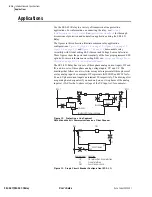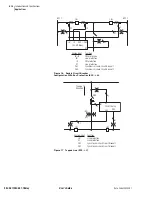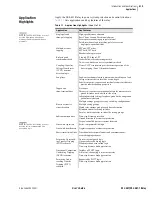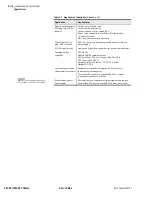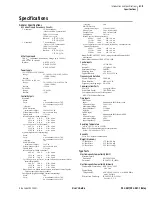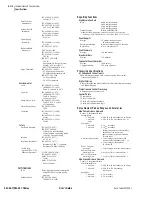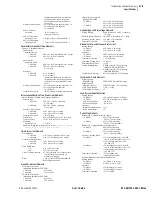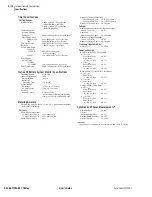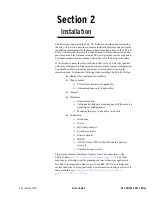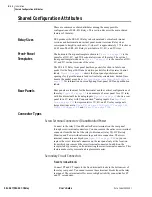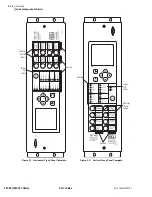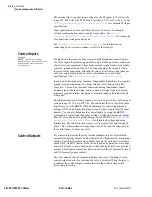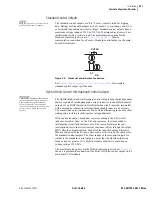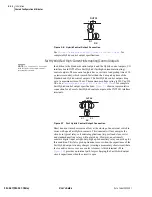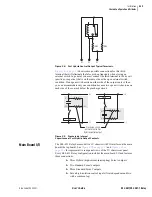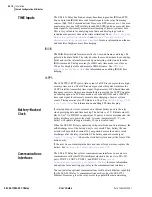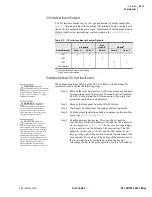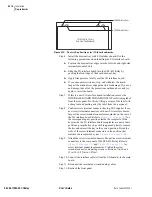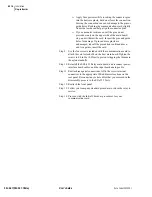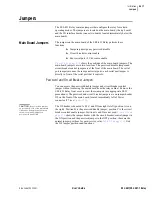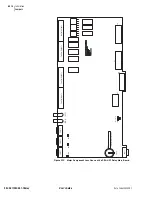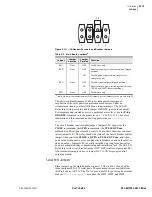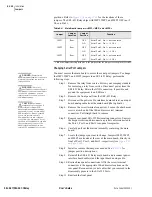
U.2.6
SEL-421/SEL-421-1 Relay
User’s Guide
Date Code 20020501
Installation
Shared Configuration Attributes
The nominal line-to-neutral input voltage for the PT inputs is 67 volts with a
range of 0–300 volts. The PT burden is less than 0.5 VA
at 67 volts, L-N. See
AC Voltage Inputs on page U.1.11 in the User’s Guide
for complete PT input
specifications.
Some applications do not use all three phases of a source; for example,
voltage synchronization sources can be single phase. See
Protection Application Examples in the Applications Handbook
for examples
of connections to the potential inputs.
See
Secondary Circuit Connections on page 2.40
for information on
connecting power system secondary circuits to these inputs.
Control Inputs
NOTE:
The SEL-421 Relay has
polarity-sensitive inputs. Observe the
polarity marks when connecting
external wiring.
I/O inputs into the relay are direct-coupled, high-impedance control inputs.
Use these inputs for monitoring on/off and logical change-of-state conditions
of power system equipment. These high-isolation control inputs are polarity-
sensitive, ground-isolated circuits. You cannot damage these inputs with a
reverse polarity connection, although the relay will not detect input changes
with a reverse-polarity input. For more information on control input
specifications, see
Control Inputs on page U.1.11 in the User’s Guide
Inputs can be independent or common. Independent inputs have two separate
ground-isolated connections to a high-isolation ADC (analog to digital
converter). There are no internal connections among independent inputs.
Common inputs share one input leg in common; all input legs of common
inputs are ground-isolated. Each pair of common inputs is isolated from all
other pairs.
Nominal current draw for these inputs is very low (4 mA or less) with an input
voltage range of 15 Vdc to 265 Vdc. You can adjust the level at which these
inputs assert; use the
SET G
(Global) command for control input pickup
settings, GINP, and advanced settings, IN
nnn
P, where
n
represents the input
number. You can also debounce the control inputs by using the
SET G
command for control input debounce settings, GIND, and advanced settings,
IN
nnn
D. You can also set a global dropout factor, GINDF. See
on page R.9.3 in the Reference Manual
for the default settings and more
information. The control input accuracy is
±
5 percent of the applied signal
plus
±
3 Vdc. The maximum voltage input is 300 Vdc, and the relay samples
the control inputs 16 times per cycle.
Control Outputs
I/O control outputs from the relay include Standard outputs, Hybrid (high-
current-interrupting) outputs, and Fast Hybrid (fast high-current-interrupting)
outputs. Fast Hybrid outputs are available only on the optional I/O interface
board INT5. An MOV (metal-oxide varistor) protects against excess voltage
transients for each contact. Each output is individually isolated except Form C
outputs, which share a common connection between the NC (normally closed)
and NO (normally open) contacts.
The relay updates control outputs eight times per cycle. Updating of relay
control outputs does not occur when the relay is disabled. When the relay is
reenabled, the control outputs assume the state that reflects the present
protection processing.
Summary of Contents for SEL-421
Page 8: ...This page intentionally left blank ...
Page 30: ...This page intentionally left blank ...
Page 110: ...This page intentionally left blank ...
Page 204: ...This page intentionally left blank ...
Page 284: ...This page intentionally left blank ...

